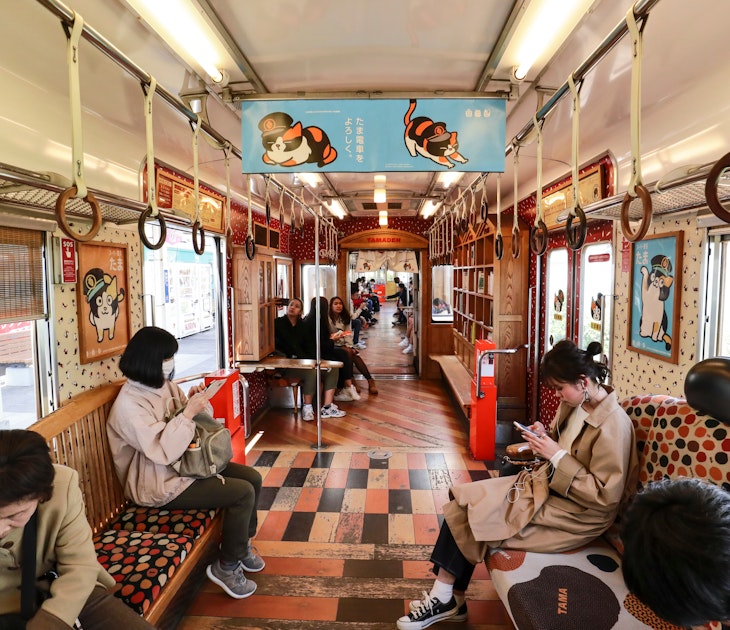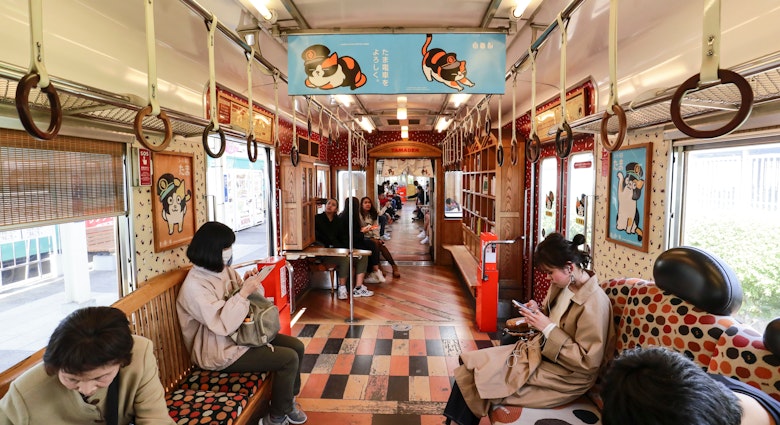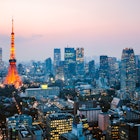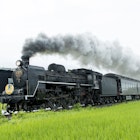John Walton winds his way through the mountainous Japanese countryside on the charming Hida train.
Think about Japanese train travel and you'll likely picture a high-speed Shinkansen rocketing through tunnels and over elevated concrete viaducts as it heads towards Tokyo at up to 200 mph (320km/h). Indeed, riding the bullet train is one of Japan's best experiences – but the Japanese rail journeys I love the most are much slower affairs.
The Hida, one of Japan’s regional Limited Express trains, is one of them. Weaving its way from bustling Nagoya’s enormous main railway station along the old pre-Shinkansen Tokaido Main Line before veering off through smaller cities and into the mountains, it passes some of the most quintessentially Japanese scenery you can see. Between Tokyo and Kyoto, this ride is perfect both for first-time Japan travelers or for return visitors who want to get off the beaten path. Nonstop, it’s a four-hour trip, but much of the joy is in breaking up your journey, including at one – or both – of the hot-spring resort towns along the route.
You can start at either end, but Nagoya is usually slightly easier to reach for most travelers. I strongly disagree with those who find Japan’s fourth-largest city dull: it’s an incredibly friendly place, with loads of delicious local foods that rank among Japan’s best. It’s also one of Japan’s greatest museum cities, with theme parks, castles and more.
Train lovers will enjoy SCMAGLEV & Railway Park, to my mind Japan’s best railway museum. If you’re into architecture, Meiji-mura showcases buildings from the Meiji period (1867–1912) as well as one by Frank Lloyd Wright, while Inuyama Castle (one of Japan’s 12 original castles) and Nagoya Castle (a replica) offer a taste of history. Take in magnificent art at the Tokugawa Art Museum – or go further afield to see how one of the world’s greatest automakers works at the Toyota Automobile Museum (a 45-ride on the floating maglev Linimo transit system). Bottom line: there’s lots to do.
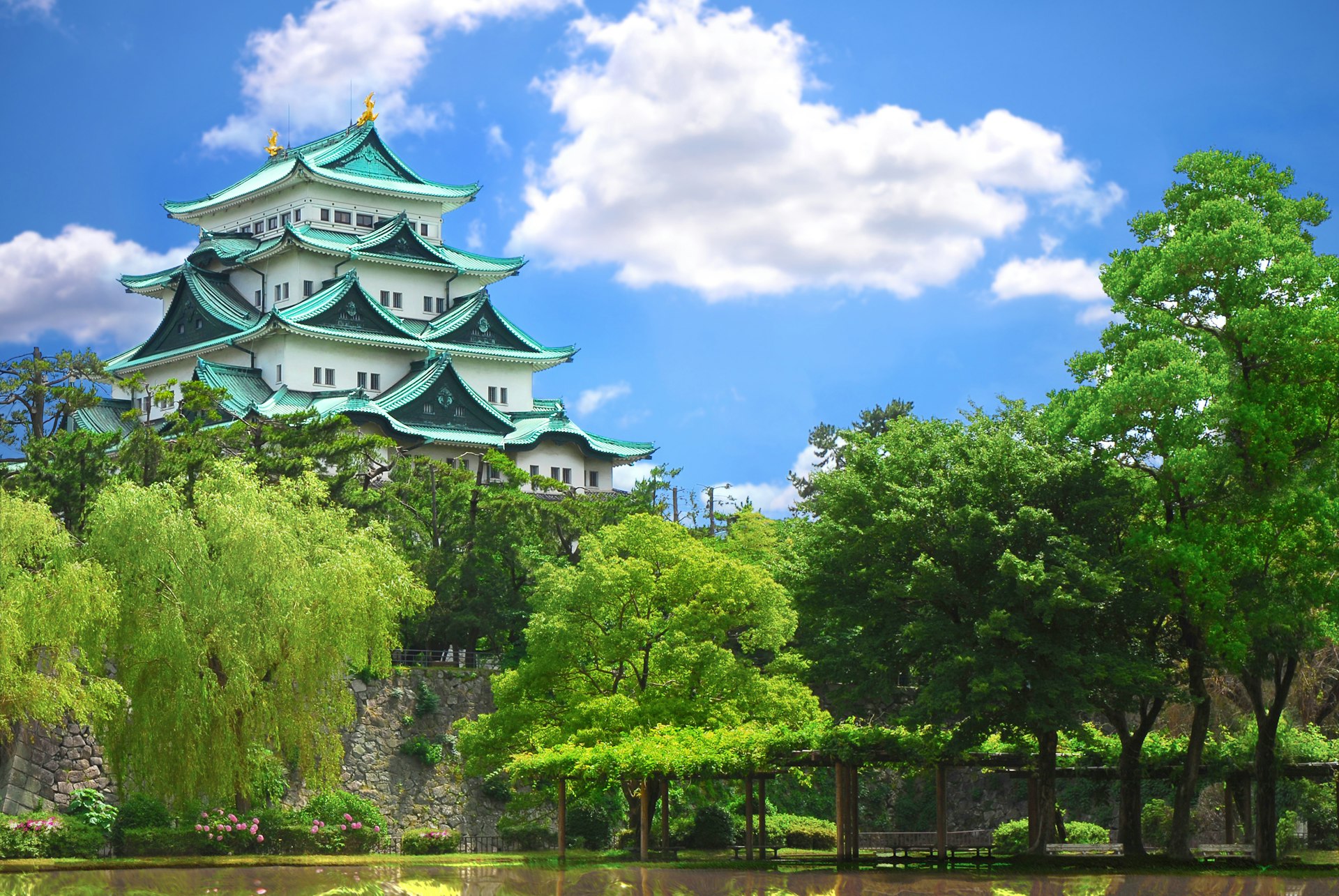
The departure
Nagoya’s main station hides secrets itself. Beneath it is a warren-like underground city that almost feels like a mini theme park. For views, a sky-high two-floor restaurant area on the top of the building contains the Takashimaya department store, including a Starbucks with an incredible view all the way southeast across the dozens of train tracks.
Must-munch options from local restaurants – some of which you can take with you on board as lunch boxes – include the local hitsumabushi eel, Nagoya-style chicken wings, misokatsu pork cutlet, the local kishimen noodles and (in winter) a misonikomi hot pot.
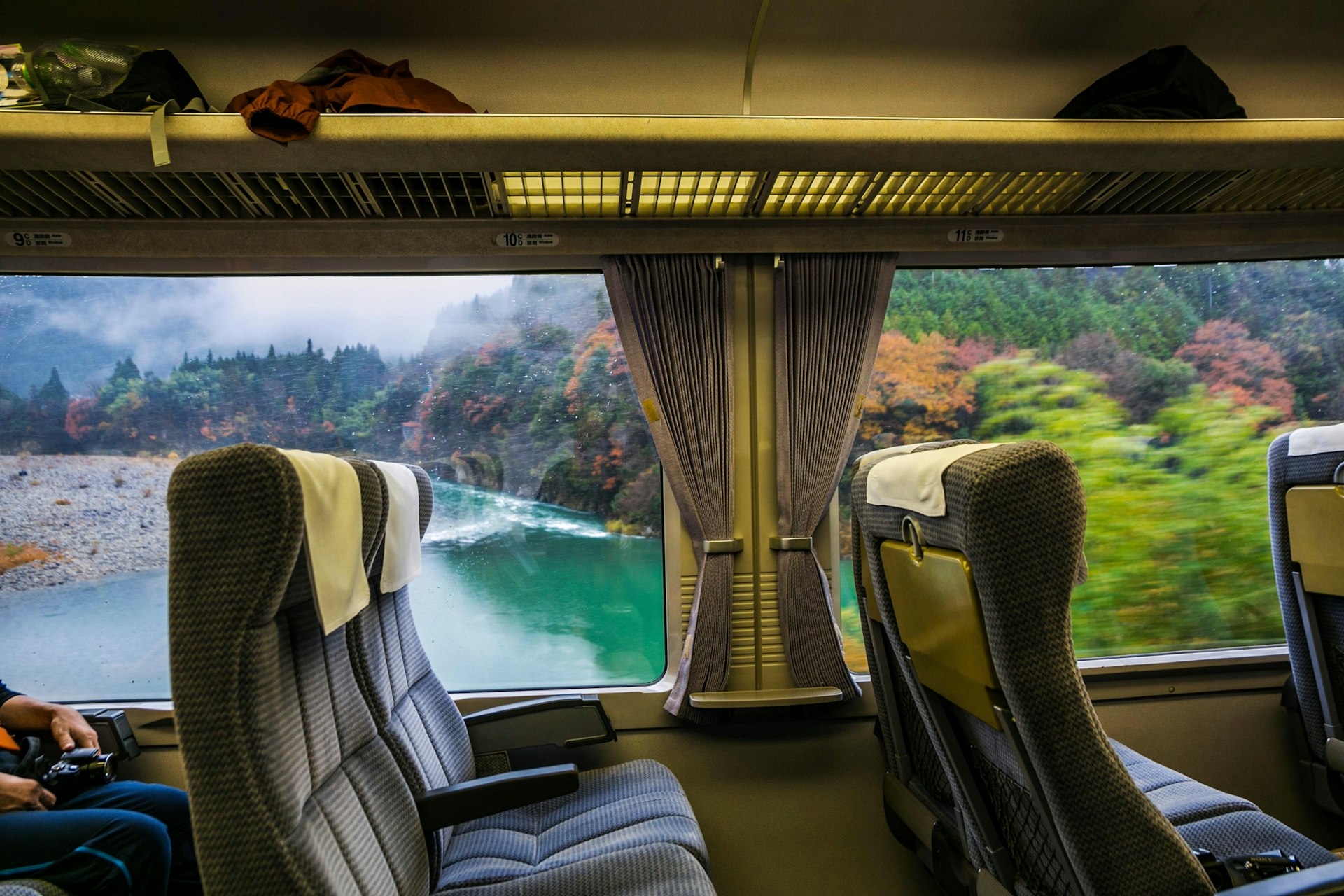
Best views on a Hida train
Named after the former Japanese province and river both called Hida, the train offers brilliant views of some of Japan’s best scenery from wide windows. It runs 10 times a day, sometimes terminating at Takayama and sometimes running through to Toyama.
At present, you’ll find either the old carriages – some delightful 1980s classics and the KiHa 85 – or the brand-new, sustainable hybrid diesel HC85. Ask the reservations desk which train it will be when you book your seat (if you have a Japan Rail Pass) or buy your tickets (if you don’t).
I find the old trains particularly charming: the front and back cars have a fully panoramic all-window nose, allowing you to watch both the view and the driver as the train weaves its way through the rough-hewn mountain tunnels on a single-track railway. These panoramic cars gave the train its previous name, the Wide View Hida; with the new trains, the name has reverted to just the Hida for all services.
You start on the Tokaido Line, the old pre-Shinkansen main line, where enormously long commuter trains mixed with JR freight trains whizzing past. You later end up changing direction at Gifu to take you up past Inuyama, a suburban town worthy of a diversion. Check out the architectural museum Meiji-mura, Inuyama Castle – a pre-modern tenshu, one of only 12 still standing – and the Uraku-en garden (whose teahouse was designated a National Treasure in 1951).
From there you start to climb up past rivers and into hills and then mountains. The multi-track main line turns into a two-track suburban line and then a single-track mountain railway as it wends its way through tunnels built in the early 1900s. On the north side of the mountains, the train breaks out into valleys of rice fields and the alluvial plains of the Jinzu and Ida Rivers. Look out the train to the east as you approach Toyama to see the Hida Mountains looming in the distance.

The best bits
This is a quintessential slow-train experience. Gaze down at bright green-blue mountain rivers right next to you, marvel at the tiny single-track tunnels hewn into the sides of the mountains by railway workers in the early 1900s, relax as you enjoy the sights of seasonal forests and rice fields, peer into the lives of small towns, and perhaps stop at one or both of the two main onsen hot spring towns on the list. (Make sure you bring your onsen towel or buy one locally as a souvenir.)
The first town is Gero-Onsen, traditionally one of Japan’s top three hot-spring towns. It’s also home to the Gassho-Mura folk village, an open-air museum a couple of miles east of the station.
Next is Takayama, sometimes called Hida Takayama to distinguish it from Japan’s other Takayamas (the name literally translates as “high mountain,” so confusion is understandable). It’s larger than sleepy Gero, and offers both hot springs and the Furui-machi-nami district, with its beautiful historical wooden buildings.
Both the Hida and other local trains connect Gero-Onsen with Takayama pretty much hourly, so are both worth a stop. Remember that the sun sets early in Japan. The last Hida north to Toyama leaves Takayama just after 5 pm.
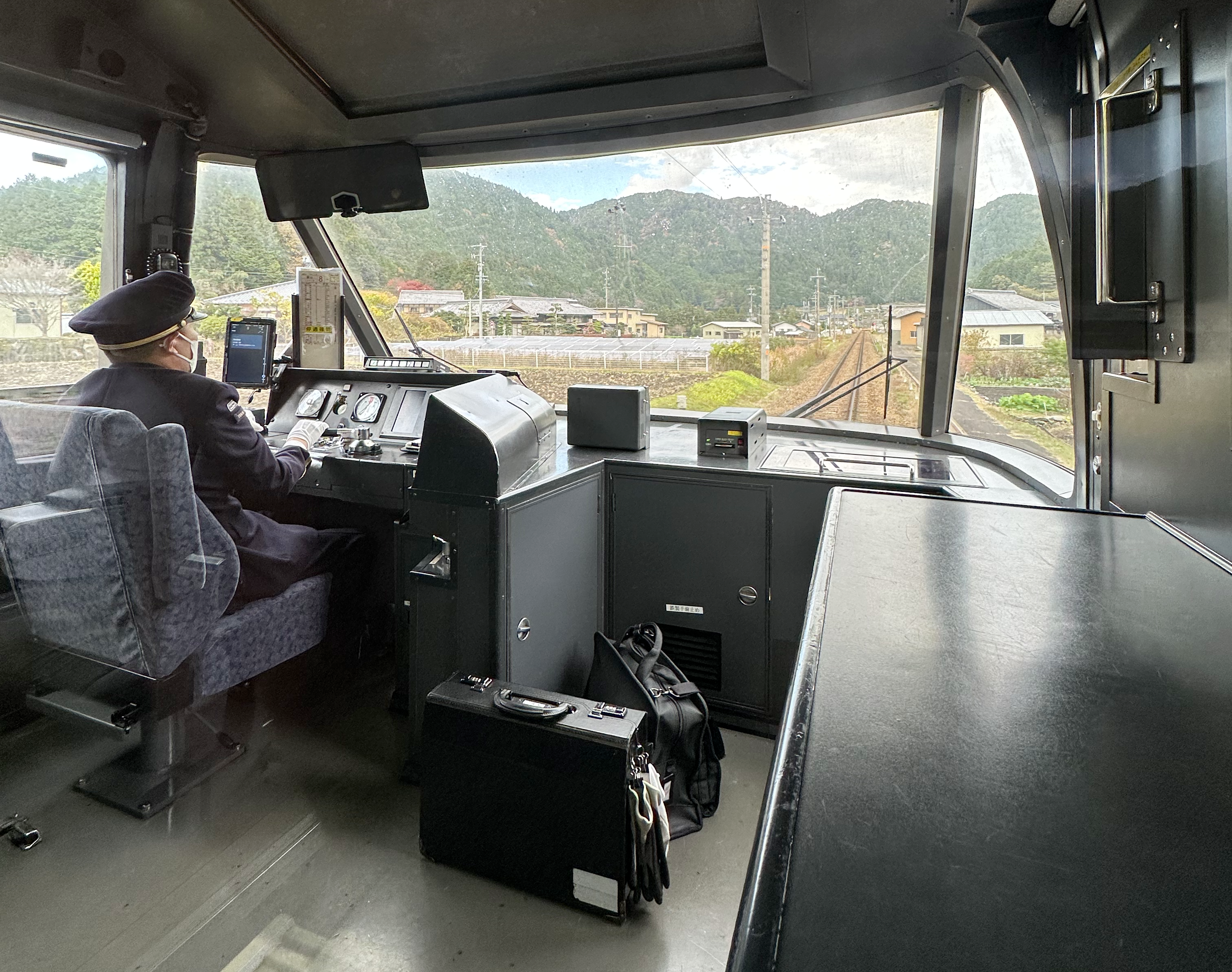
Keep an eye out at tiny Inotani station for a change of drivers: this is the 'border' between the areas covered by the JR Central and JR-West railway companies. One driver hops off with a quick salute to the other company’s driver, who hops on. It’s all done in a flash.
If you make it to the front car, it’s fascinating to watch the driver as they do the famous Japan Railways point-and-call at every single signal. “Shinko!” they say out loud, with confidence, as they point a finger at every green signal on the way.

Anything else to know?
Tourist information for visitors is occasionally broadcast throughout the train, including on the older trains via a rather ingenious low-tech system: a cassette player held up to the microphone.
The region has done a great job in recent years increasing the already decent level of signage in English, and a growing number of tourist information and railway staff are confident in world languages. Even first-time visitors should feel confident in navigating this wonderful journey.
The arrival
When you get to Toyama, you might be tempted to speed off on your next train. But you won’t regret stopping here.
Transport buffs will enjoy a ride on the Toyama Portram, Japan’s first Light Rail Transit (LRT) line, while gourmets can sample some of Japan’s freshest and most delicious sushi from the rich waters of Toyama Bay. Don’t miss the local specialty, pressed-trout masu-zushi (which also makes an excellent on-train meal), or let your eyes do the choosing at one of the restaurant floors in one of the malls right next to the station building.
Japanese trains are famously on time, so you’ll be shocked to know that my train was running about 15 minutes late owing to a truck having crashed into one of the bridges in the Nagoya region. Of course, this being Japan, there was a small brigade of railway staff in emergency armbands waiting on the platform to help passengers make new connections.
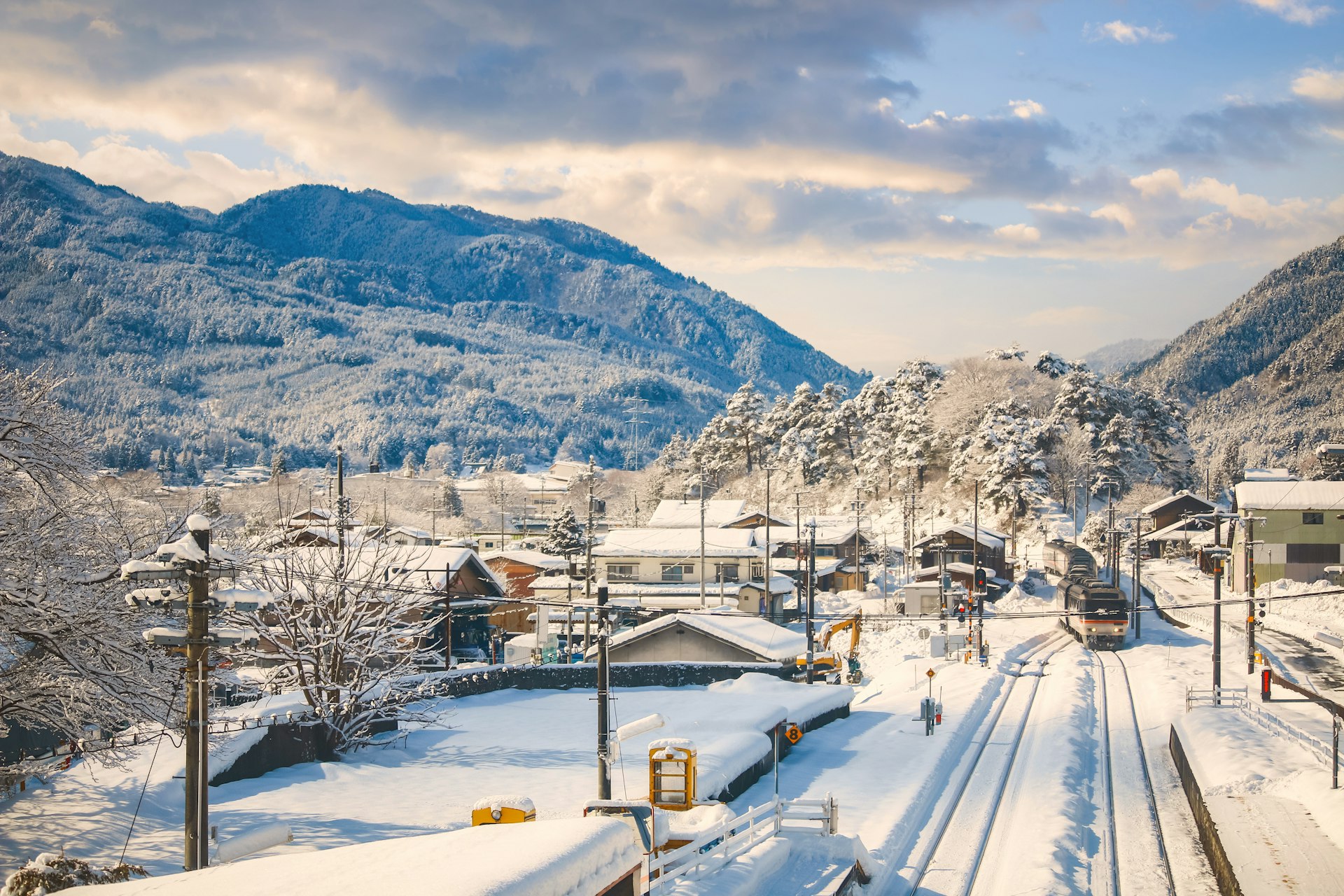
Where do the tracks lead from here?
Nagoya is a key stop along Tokyo’s first and busiest bullet train line, the famous Tokaido Shinkansen, as well as numerous slower conventional lines operated by JR Central and private railway companies.
Toyama is served by one of the newest high-speed rail lines, the Hokuriku Shinkansen: you can speed west to Kanazawa and as far as Fukui, where you can change for Kyoto, or return to Tokyo via Nagano and Takasaki.

More information
The best time to take the Hida line
The mountains are beautiful for most of the year, especially in spring and autumn – but Toyama Prefecture’s enormous snowfall means that a winter trip is a particular delight. Avoid the summer unless you love heat and humidity.
Food and drink during the journey
As ever in Japan, try the local ekiben bento boxes featuring scrumptious regional specialties, usually over rice, and consider stopping off at one of the omiyage souvenir stalls at your departure station for delicious snacks (Japanese people buy them to bring home for friends and colleagues). These shops are also great for local sake and the growing range of Japanese regional craft beers.
Tickets
As with almost all trains in Japan, ticket prices are fixed rather than dynamic. You’ll pay the same whether you book months in advance or walk up the day you’re traveling.
Fares start at ¥7130 (US$48) for the entire route. Reserved seat fares and the Green Car first class seats are extra but worth it if you can get a seat in the panoramic front car. You can buy tickets from any JR ticket office in Japan, or Japan-specialist travel agents. Rail passes that cover the area, including the nationwide Japan Rail Pass, can be used but require advance reservation.
Transport
Nagoya’s Chubu Centrair international airport has flights to dozens of Asian destinations, as well as Detroit (Delta Air Lines), Guam (United Airlines) and Honolulu (Japan Airlines).
Accommodation
As with most Japanese cities, you’ll find everything from capsule hotels to inexpensive yet reliable “business hotels” up to international brands near both Nagoya and Toyama stations.


